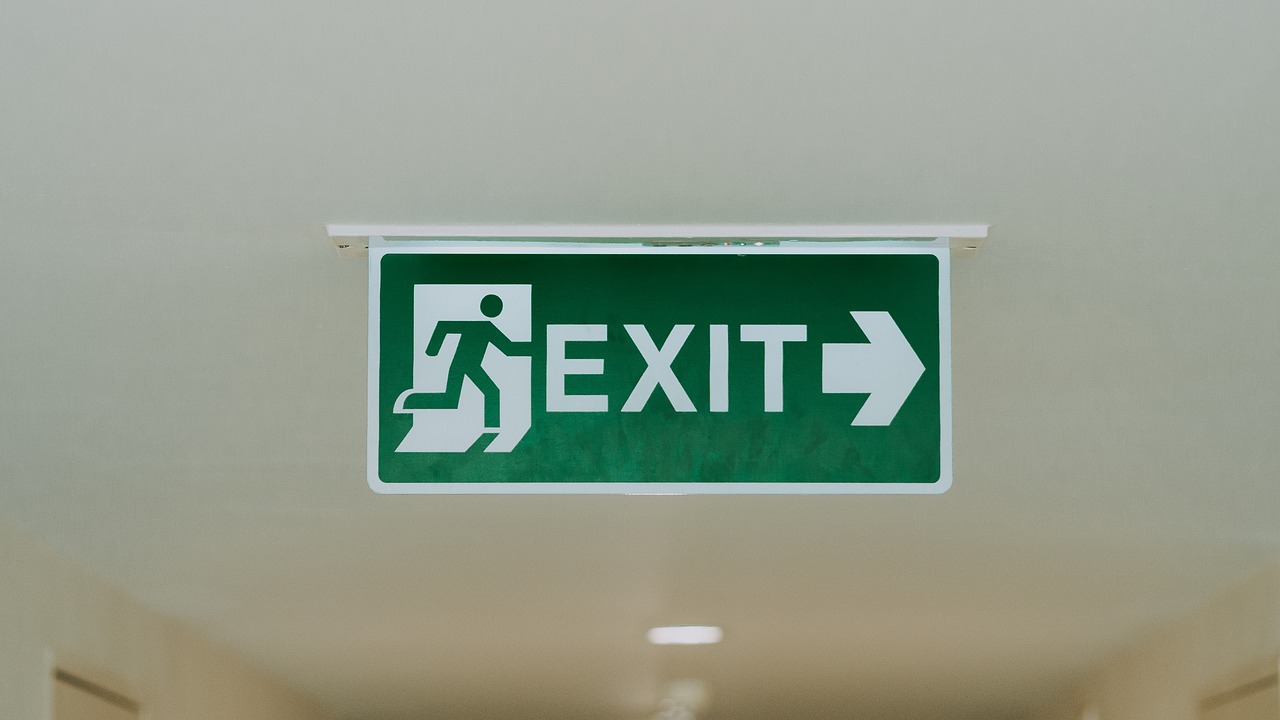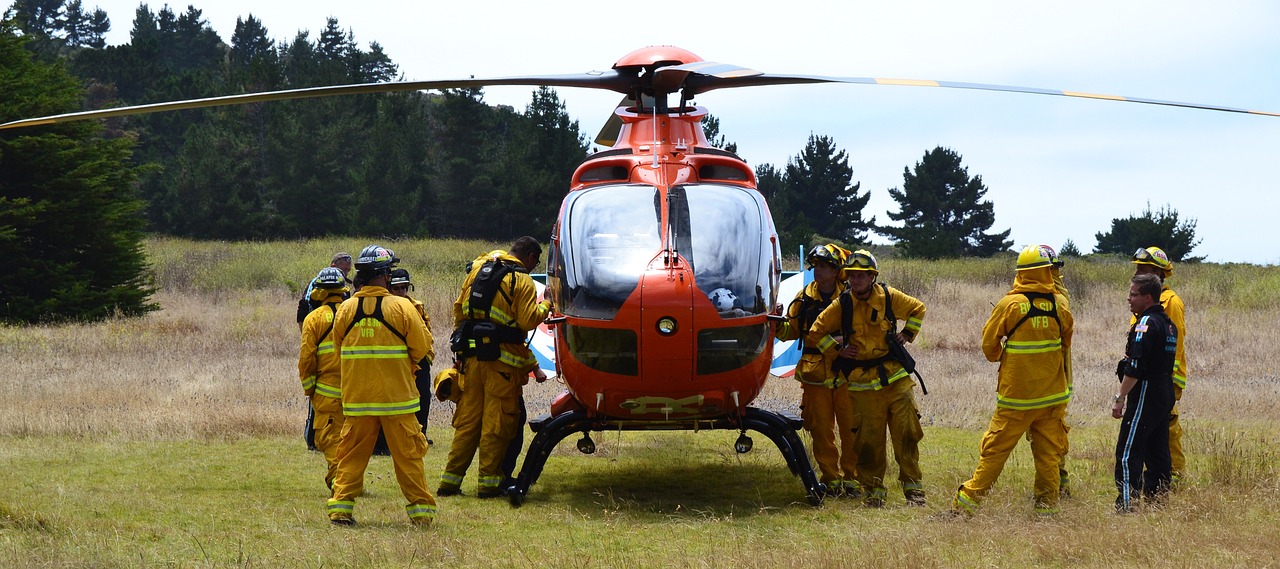Preparing for Emergencies in a Digital Age
In our fast-paced, technology-driven world, the importance of being prepared for emergencies cannot be overstated. Imagine waking up to an unexpected crisis—a natural disaster, a cyber-attack, or even a personal emergency. How would you respond? The reality is that our reliance on digital tools and connectivity can both enhance and complicate our emergency preparedness. On one hand, we have access to a plethora of resources and information at our fingertips; on the other, we face unique vulnerabilities that can hinder our response efforts.
As we delve into the strategies for preparing for emergencies in this digital age, it's essential to recognize that being prepared goes beyond just having a first aid kit or knowing your evacuation routes. It's about creating a comprehensive plan that integrates both traditional emergency preparedness methods and modern technology. This article will explore the essential strategies and tools for effectively preparing for emergencies, ensuring safety and resilience in times of crisis.
So, how can we leverage technology while safeguarding ourselves against its potential pitfalls? The answer lies in understanding our digital vulnerabilities and crafting a robust emergency plan that accounts for both physical and digital threats. By doing so, we can not only protect ourselves and our loved ones but also ensure we are equipped to respond effectively when the unexpected occurs. Are you ready to dive into the digital landscape of emergency preparedness?
From identifying critical information to utilizing technology for alerts, each step we take today can make a significant difference tomorrow. Let’s explore how we can prepare for emergencies in a world where digital and physical realities intertwine.

Understanding Digital Vulnerabilities
In today's interconnected world, understanding digital vulnerabilities has become more crucial than ever. With the rise of technology, our reliance on digital tools for communication, information, and even emergency preparedness has grown exponentially. However, this reliance also exposes us to various threats that can impact our safety during crises. Think about it: when was the last time you considered how a cyberattack could disrupt emergency services or how a natural disaster could compromise your internet connection?
Common threats such as malware, phishing attacks, and data breaches can severely hinder our ability to respond effectively in emergencies. For instance, if a hacker gains access to your emergency contact information, they could manipulate it to create chaos when you need help the most. Moreover, during natural disasters, power outages can leave us cut off from vital information and resources. Understanding these vulnerabilities means acknowledging that while technology can be a lifeline, it can also be a double-edged sword.
Moreover, consider the implications of social media in emergencies. While platforms like Twitter and Facebook can disseminate information quickly, they can also spread misinformation just as fast. This can lead to panic or misinformed decisions that could put lives at risk. Thus, it's essential to develop a discerning eye and rely on verified sources for emergency alerts.
To illustrate the importance of recognizing these vulnerabilities, let's take a look at a few key threats:
| Threat | Description | Impact on Emergency Preparedness |
|---|---|---|
| Malware | Software designed to disrupt or damage systems. | Can compromise access to emergency contacts and critical data. |
| Phishing | Fraudulent attempts to obtain sensitive information. | May lead to unauthorized access to personal accounts. |
| Data Breaches | Unauthorized access to confidential data. | Can result in loss of critical information needed during emergencies. |
Ultimately, understanding these digital vulnerabilities is the first step in creating a resilient emergency plan. By recognizing the potential pitfalls of our digital landscape, we can better prepare ourselves to navigate crises effectively. So, as you think about your emergency preparedness strategy, don't just focus on physical supplies; also consider how to safeguard your digital presence.

Creating a Digital Emergency Plan
In an era where our lives are deeply intertwined with technology, having a digital emergency plan is more important than ever. Think of it as your digital lifeboat, ready to help you navigate through the stormy seas of a crisis. A well-structured plan not only prepares you for emergencies but also ensures that you can respond swiftly and effectively when the unexpected strikes. So, what should you include in this plan? Let’s break it down into essential components that will bolster your preparedness.
The first step in crafting your digital emergency plan is to identify what critical information you need to have at your fingertips. This information can be a lifeline during a crisis, so it’s crucial to keep it organized and accessible. Consider including items such as:
- Your medical history and any critical health information.
- Emergency contact numbers for family, friends, and local authorities.
- Insurance policy details, including health, home, and auto.
- Important documents like passports, birth certificates, and property deeds.
Once you have identified this critical information, the next step is to implement data backup solutions. Imagine losing all your important files in the blink of an eye; it’s a nightmare scenario. To prevent this, you should consider multiple backup methods. For instance, using a combination of cloud storage and physical external hard drives can provide a robust safety net. Cloud services like Google Drive or Dropbox allow you to store your files online, making them accessible from anywhere, while an external hard drive ensures you have a physical copy at hand.
Additionally, maintaining an emergency contact list is vital. This list can be a game-changer in a crisis, allowing you to reach out to loved ones or emergency services quickly. Make sure to keep it updated and easily accessible, perhaps in a shared document or a dedicated app on your smartphone. You never know when you might need to make that critical call, so having this information readily available can save precious time.
Another key aspect of your digital emergency plan is utilizing technology for alerts. In today’s fast-paced world, staying informed is crucial. There are various apps and tools available that can provide real-time alerts about emergencies in your area, such as weather warnings or local disasters. Consider downloading apps like FEMA, Red Cross Emergency, or local news station apps that offer emergency notifications. These tools can keep you in the loop and help you make informed decisions when it matters most.
Finally, remember that a digital emergency plan is not a one-time effort. It requires regular reviews and updates to remain effective. Set a reminder to evaluate your plan every six months or after any significant life changes, such as moving or changing jobs. This ongoing commitment ensures that your plan adapts to your evolving needs and continues to offer the protection you seek.
In conclusion, creating a digital emergency plan is about being proactive rather than reactive. By identifying critical information, implementing robust backup solutions, maintaining an emergency contact list, utilizing technology for alerts, and regularly updating your plan, you can enhance your preparedness for any crisis. Think of it as setting up a safety net that will catch you when you fall, ensuring that you and your loved ones are always protected.
Q: What should I include in my emergency contact list?
A: Your emergency contact list should include family members, close friends, neighbors, and local authorities. Make sure to have their phone numbers and, if possible, email addresses for quick communication.
Q: How often should I back up my data?
A: It's best to back up your data regularly, ideally on a weekly basis. However, after significant changes or additions to your files, consider performing an immediate backup.
Q: What technology tools are recommended for receiving alerts?
A: Recommended tools include FEMA and Red Cross Emergency apps, as well as local news apps that provide real-time alerts relevant to your area.
Q: How do I know if my digital emergency plan is effective?
A: Regularly evaluate your plan, conduct drills, and seek feedback from family members. If your plan allows for quick access to critical information and effective communication during a crisis, then it is likely effective.

Identifying Critical Information
When it comes to preparing for emergencies, one of the most crucial steps is . Think of this as creating your own personal lifeline during a crisis. In the chaos of an emergency, having the right information at your fingertips can make all the difference between staying calm and feeling overwhelmed. So, what exactly should you focus on?
First, consider the essentials that you and your family might need in case of an emergency. This includes not only personal identification but also important documents that might be hard to replace. Here’s a quick rundown of information you should prioritize:
- Identification Documents: This includes passports, driver's licenses, and social security cards.
- Medical Records: Keep a record of allergies, medications, and any pre-existing health conditions.
- Insurance Information: Having your insurance policies on hand can help expedite recovery processes.
- Financial Information: Important bank account details and credit card information should be easily accessible.
- Emergency Contact Information: A list of family members, friends, and local emergency services.
Next, it’s essential to think about how you will store this information. In our digital age, utilizing technology can be a game-changer. Consider using secure cloud storage solutions or encrypted apps to keep your data safe yet accessible. This way, even if physical copies are lost or damaged, you still have a backup. Just imagine being in a situation where you can pull up your medical records on your phone within seconds—how reassuring would that be?
Moreover, don't forget about the importance of updating this information regularly. Life changes, and so does the information you need to keep track of. Set a reminder to review your critical information at least once a year or after any significant life event, such as moving, changing jobs, or welcoming a new family member.
Lastly, share this critical information with trusted family members or friends. In an emergency, they may need access to your information to help you. It’s a bit like having a safety net—knowing that someone else can step in if you’re unable to act is incredibly empowering.
In conclusion, identifying and organizing your critical information is a fundamental part of emergency preparedness. By taking the time to gather, store, and share this information, you’ll be setting yourself up for a more resilient response when the unexpected occurs.

Data Backup Solutions
In our fast-paced digital world, having a solid data backup solution is not just a luxury; it’s a necessity. Imagine losing all your important files, photos, and documents in the blink of an eye due to a system crash, natural disaster, or cyber-attack. The thought alone is enough to send shivers down anyone's spine! But fear not, because with the right backup strategies, you can safeguard your information and breathe a little easier.
First and foremost, it's crucial to understand the different types of backup solutions available. Generally, they can be classified into three main categories: local backups, cloud backups, and hybrid backups. Each of these has its own advantages and disadvantages, and the best choice often depends on your specific needs and circumstances.
| Backup Type | Advantages | Disadvantages |
|---|---|---|
| Local Backups |
|
|
| Cloud Backups |
|
|
| Hybrid Backups |
|
|
When choosing a backup solution, consider factors like data volume, budget, and recovery time objectives. For instance, if you have a significant amount of data that you access frequently, a local backup might be your best bet for quick recovery. On the other hand, if you're looking for convenience and remote access, cloud backups could be the way to go.
Another key aspect of your backup strategy should be the frequency of backups. It’s not enough to just back up your data once and call it a day. Regularly scheduled backups help ensure that you always have the most recent version of your files. Many cloud services offer automated backups, which can save you time and hassle. However, if you’re using local storage, setting a reminder to back up your data weekly or bi-weekly can keep your information safe.
Finally, it’s essential to test your backups regularly. There’s nothing worse than discovering that your backup files are corrupted or incomplete when you need them the most. Take some time to restore a few files from your backup to verify that everything is functioning correctly. This practice not only gives you peace of mind but also helps you identify any potential issues before they become a crisis.
In summary, investing in a reliable data backup solution is a critical step in preparing for emergencies in our digital age. By understanding your options, establishing a regular backup schedule, and testing your backups, you can ensure that your valuable information is protected and readily accessible when you need it the most.
1. How often should I back up my data?
It's advisable to back up your data at least once a week, but if you handle a lot of critical files, consider daily backups.
2. What is the best cloud backup service?
The best service depends on your needs, but popular options include Google Drive, Dropbox, and Backblaze for their reliability and ease of use.
3. Can I use both local and cloud backups?
Absolutely! This hybrid approach can provide the best protection by combining the speed of local backups with the convenience of cloud storage.

Emergency Contact Lists
In the chaos of an emergency, having a well-organized emergency contact list can be a lifesaver. Imagine you're in a situation where every second counts—your phone is buzzing, notifications are flying in, and you're trying to remember who to reach out to. It's like trying to find a needle in a haystack! That’s why creating and maintaining an effective emergency contact list is not just a good idea; it's essential.
Your emergency contact list should include a variety of contacts, ensuring that you can reach someone, no matter the scenario. Start with immediate family members, but don't stop there. Think about including:
- Close friends who live nearby.
- Neighbors who can assist in your absence.
- Emergency services, such as local police and fire departments.
- Medical contacts, including doctors and poison control.
- Work contacts in case you need to inform your employer about your situation.
It's also wise to include contacts for local shelters or emergency services that can provide assistance during a crisis. This way, you have a comprehensive resource at your fingertips. Consider creating a digital version of your contact list that can be easily accessed on your smartphone or a cloud service. This ensures that even if you lose your physical copy, you won’t be left in the dark.
Additionally, it's important to keep this list updated. Life changes quickly—people move, change jobs, or their phone numbers may change. Make it a habit to review and update your emergency contact list at least once every few months. You might even want to set a reminder on your phone to do this, so it becomes part of your routine. Keeping your list current is like having a safety net; it gives you peace of mind knowing that you can reach the right people when it matters most.
Lastly, consider sharing your emergency contact list with trusted friends or family members. This way, if you’re unreachable, they can step in and help coordinate your safety. Think of it as building a safety web—each contact is a strand that helps hold everything together during a storm. In a digital age where we often rely on technology, taking these simple steps can significantly enhance your emergency preparedness.

Utilizing Technology for Alerts
In our fast-paced, technology-driven world, staying informed during emergencies is more crucial than ever. Imagine being in the middle of a storm, and your phone buzzes with an alert about impending danger. That’s the power of technology in action! Utilizing various digital tools can significantly enhance your awareness and response during crises. So, how can you leverage technology to ensure you’re always in the know?
First and foremost, mobile apps have become indispensable for emergency alerts. Many local governments and organizations have developed applications that provide real-time updates on weather conditions, natural disasters, and other emergencies. For instance, apps like FEMA and Red Cross not only send alerts but also offer safety tips and resources tailored to your location. By downloading these apps, you can receive notifications directly to your device, ensuring you’re never caught off guard.
Another vital aspect of utilizing technology for alerts is social media. Platforms like Twitter and Facebook are often the first places where news breaks. Following local news outlets, emergency services, and community pages can provide you with immediate updates. It’s like having a digital town crier at your fingertips! Just remember to verify any information you see online, as misinformation can spread just as quickly as accurate news.
In addition to apps and social media, consider setting up alerts through your smartphone’s built-in features. Both iOS and Android devices allow users to customize notifications for severe weather alerts and emergency broadcasts. This means you can receive critical updates even when you’re busy or away from your computer. Imagine being at a family gathering when suddenly your phone vibrates with a tornado warning—this feature could literally save lives!
Moreover, don’t overlook the power of traditional communication methods. While digital tools are fantastic, having a backup plan is essential. Consider investing in a weather radio that broadcasts alerts even when the power is out. These devices can be a lifesaver during severe weather events when cellular networks may be overloaded or down.
Lastly, it’s important to share your alert systems with your family and friends. Make sure everyone knows which apps to download and how to set up their alerts. It’s like forming a digital safety net—everyone is connected and informed, making it easier to coordinate responses during emergencies. After all, preparedness is not just an individual effort; it’s a community one!
In summary, utilizing technology for alerts is about being proactive rather than reactive. By integrating apps, social media, smartphone features, and traditional communication methods into your emergency preparedness strategy, you can ensure that you and your loved ones stay informed and safe when it matters most.
- What are the best apps for emergency alerts? Some of the top apps include FEMA, Red Cross, and local weather apps that provide real-time updates.
- How can I ensure I receive alerts on my phone? Enable notifications for emergency apps and customize your smartphone settings for severe weather alerts.
- Is social media reliable for emergency information? While social media can provide timely updates, always verify information from trusted sources before acting on it.
- What should I do if I lose power during an emergency? Have a battery-operated weather radio on hand to receive alerts and updates.

Training and Drills
When it comes to emergency preparedness, are not just optional; they are absolutely essential. Imagine being in a critical situation where every second counts, and you find yourself frozen, unsure of what to do. This is why practicing your emergency plan is crucial. It’s like learning to ride a bike; the more you practice, the more instinctive it becomes. Regular drills help you and your loved ones become familiar with the steps to take, ensuring that when an emergency strikes, you can respond swiftly and effectively.
In our digital age, the way we train for emergencies has evolved dramatically. Gone are the days when training meant gathering in a room and going through a manual. Now, we have access to an array of digital tools and simulations that can make our training more engaging and realistic. For instance, virtual reality (VR) simulations can immerse you in emergency scenarios, allowing you to practice your response in a controlled environment. This not only boosts your confidence but also helps you identify areas where you might need improvement.
Furthermore, involving your family in these training sessions can create a sense of unity and preparedness. Consider scheduling regular family drills where everyone knows their roles. This could include practicing fire escape routes, reviewing emergency contact procedures, or even simulating a power outage. The goal is to ensure that everyone understands what to do and feels comfortable executing the plan. Remember, the more you practice, the less likely panic will set in during a real emergency.
To make your training sessions effective, consider the following components:
- Realistic Scenarios: Create scenarios that are relevant to your location and lifestyle. For example, if you live in an area prone to earthquakes, practice what to do when the ground starts shaking.
- Utilize Technology: Use apps designed for emergency preparedness that offer reminders, checklists, and even virtual drills.
- Feedback and Improvement: After each drill, take time to discuss what went well and what could be improved. This will help refine your plan and make it even more effective.
Additionally, connecting with local community resources can enhance your training efforts. Many communities offer workshops and training sessions on emergency preparedness, often utilizing the latest technology to make the learning process engaging. These resources can provide valuable insights and skills that you might not have considered. Plus, they allow you to meet others in your community who share similar concerns about safety and preparedness.
In conclusion, remember that emergency preparedness is not a one-time event but a continuous process. Regular training and drills are vital to ensure that you, your family, and your community are ready to face any crisis that may arise. So, gear up, gather your loved ones, and start practicing today. You never know when it might save a life.
Q: How often should I conduct emergency drills?
A: It's recommended to conduct emergency drills at least twice a year. However, you can adjust the frequency based on your family's needs and the specific risks in your area.
Q: What types of emergencies should I prepare for?
A: Consider the most likely emergencies for your area, such as natural disasters (earthquakes, floods), medical emergencies, or fire. Tailor your drills to practice responses for these scenarios.
Q: Can technology really help in emergency preparedness?
A: Absolutely! There are numerous apps and online resources that provide checklists, alerts, and simulation tools to enhance your preparedness efforts.
Q: Should I involve my children in emergency drills?
A: Yes! Involving children in emergency drills helps them understand the importance of safety and prepares them to respond calmly in a crisis.

Engaging with Community Resources
When it comes to emergency preparedness, engaging with community resources can be a game-changer. Think of your local community as a vast network of support, like a safety net woven from the threads of various organizations, volunteers, and resources. By tapping into this network, you can significantly enhance your preparedness efforts and ensure you are not navigating the storm alone.
One of the most effective ways to engage with community resources is to connect with local organizations that specialize in emergency management. These organizations often provide invaluable information, training sessions, and resources tailored to your specific area. For instance, many communities have local Red Cross chapters or emergency management offices that offer training programs on disaster response and recovery. By participating in these programs, you not only gain critical knowledge but also build relationships with others who share your commitment to safety.
Additionally, consider reaching out to your neighborhood associations or community centers. These hubs can serve as a fantastic starting point for gathering information about local resources. They often have bulletin boards or newsletters that feature upcoming workshops, volunteer opportunities, and emergency preparedness events. By staying informed, you can be proactive rather than reactive when a crisis strikes.
Moreover, don't underestimate the power of social media and online platforms. Many community organizations maintain active online presences where they share updates, resources, and alerts. By following these organizations, you can receive real-time information and stay connected with your community. This is particularly crucial during emergencies when communication can be disrupted. Social media can act as a lifeline, keeping you informed about evacuation routes, shelter locations, and safety tips.
To further illustrate the importance of community engagement, consider the following table that outlines various community resources and their offerings:
| Resource | Services Offered |
|---|---|
| Local Red Cross Chapter | Disaster response training, first aid courses, emergency kits |
| Community Center | Workshops on emergency preparedness, community drills |
| Neighborhood Association | Information on local emergency plans, neighborhood watch programs |
| Local Fire Department | Fire safety education, community outreach programs |
Lastly, remember that engaging with community resources is a two-way street. While you seek support and information, consider how you can contribute to the community as well. Volunteering your time or skills can strengthen the bonds within your community and create a culture of preparedness. Whether it’s helping organize a local emergency drill or sharing your expertise in digital tools, every little bit counts.
In conclusion, engaging with community resources is not just about gathering information; it’s about building a resilient network that can withstand the challenges of emergencies. By leveraging these resources, you can enhance your preparedness and ensure that you and your loved ones are ready to face any crisis that comes your way.
Q: How can I find local emergency resources?
A: Start by checking with your local government’s emergency management office, community centers, or organizations like the Red Cross. Social media is also a great way to stay updated on local resources.
Q: What should I do if I can’t find information about my community’s emergency plans?
A: Reach out directly to your local emergency management office or community organization. They can provide you with the most accurate and up-to-date information.
Q: How can I get involved in my community’s emergency preparedness efforts?
A: Look for volunteer opportunities with local organizations, attend community meetings, and participate in training sessions to contribute to your community’s preparedness efforts.

Evaluating and Updating Your Plan
When it comes to emergency preparedness, having a plan is just the beginning. It's crucial to evaluate and update your plan regularly to ensure that it remains effective and relevant. Think of your emergency plan as a living document; it should evolve just like your life does. After all, the world around us is constantly changing, and so are the potential threats we face. Whether it's a natural disaster, a cyber crisis, or a personal emergency, your plan needs to reflect current realities.
To start, schedule regular reviews of your emergency plan—consider doing this every six months or at least once a year. During these evaluations, ask yourself a few key questions:
- Have there been any changes in my household or workplace that could affect the plan?
- Are there new technologies or tools available that could enhance my preparedness?
- Have I received any feedback from drills or actual emergencies that could inform improvements?
Once you've gathered this information, it’s time to make necessary adjustments. For example, if you’ve moved to a new area, you’ll want to familiarize yourself with local emergency services and resources. Updating contact information is also vital; people change phones, and new emergency contacts may need to be added. You might even consider using a digital platform to store and share your emergency plan, making it easily accessible to family members or coworkers.
Another important aspect of updating your plan is to incorporate lessons learned from real-life situations. If you've experienced an emergency, reflect on what worked well and what didn’t. Did you receive timely alerts? Were you able to access critical information quickly? Engaging in this reflective practice not only strengthens your plan but also builds your confidence in handling emergencies.
Lastly, don’t forget to keep your community resources in mind. Local organizations often provide updated information and resources that can enhance your emergency preparedness. By staying connected with these groups, you can ensure that your plan is not only comprehensive but also in line with community-wide strategies. Remember, the more informed you are, the better prepared you will be.
In summary, evaluating and updating your emergency plan is not just a task—it's an ongoing commitment to safety and resilience. By regularly reviewing your plan, incorporating feedback, and leveraging community resources, you can transform your emergency preparedness from a mere checklist into a robust strategy that truly safeguards you and your loved ones.
Q: How often should I update my emergency plan?
A: It’s recommended to review and update your emergency plan at least once every six months or whenever there are significant changes in your life or environment.
Q: What should I include in my emergency plan?
A: Your emergency plan should include contact information, evacuation routes, emergency supplies, and communication strategies. Additionally, consider including digital tools that can assist in emergencies.
Q: How can I ensure my family is prepared?
A: Involve your family in the planning process. Conduct drills together and ensure everyone knows their roles and responsibilities during an emergency.
Q: What are some good digital tools for emergency preparedness?
A: Some useful digital tools include emergency alert apps, cloud storage for important documents, and communication platforms for quick updates during a crisis.
Frequently Asked Questions
- What are digital vulnerabilities, and why should I care?
Digital vulnerabilities are weaknesses in your online presence that can be exploited during emergencies. In our tech-savvy world, understanding these vulnerabilities is crucial. They can affect everything from your personal data to the effectiveness of your emergency response. Ignoring them could leave you unprepared when it matters most!
- How do I create a digital emergency plan?
Creating a digital emergency plan involves several key components. Start by identifying critical information you need access to during a crisis, like important documents and contacts. Then, choose reliable data backup solutions to ensure your information is safe. Finally, develop a list of emergency contacts that is easily accessible, so you can reach out to loved ones or authorities quickly.
- What are the best data backup solutions for emergencies?
There are several effective data backup solutions to consider. Cloud storage services like Google Drive or Dropbox offer secure online access to your files. Alternatively, you can use external hard drives to keep a physical copy of your important data. The key is to regularly update your backups to ensure you have the most current information available when you need it.
- How can technology help me receive alerts during emergencies?
Technology can be a lifesaver when it comes to receiving timely alerts. You can use apps like FEMA or local weather services to get real-time updates on emergencies in your area. Social media platforms also play a crucial role in disseminating information quickly. Just make sure to enable notifications so you don't miss any important alerts!
- Why are training and drills important for emergency preparedness?
Regular training and drills help you practice your emergency plan, ensuring everyone knows their roles during a crisis. Think of it as a fire drill—when the real thing happens, you want to be prepared! Utilizing digital tools and simulations can make these practices more engaging and effective, helping you react swiftly when it counts.
- How can I engage with community resources for better preparedness?
Connecting with local organizations can significantly enhance your emergency preparedness efforts. Many communities offer resources like workshops, training sessions, and digital tools to help you stay informed. Don’t hesitate to reach out to your local emergency management office to learn about available resources and how you can get involved.
- How often should I evaluate and update my digital emergency plan?
Your digital emergency plan should be a living document, not a one-time effort. Regular evaluations, at least once a year or after significant life changes, are essential. This ensures that your plan remains relevant and effective. Remember, the more prepared you are, the better equipped you’ll be to handle any crisis!


















